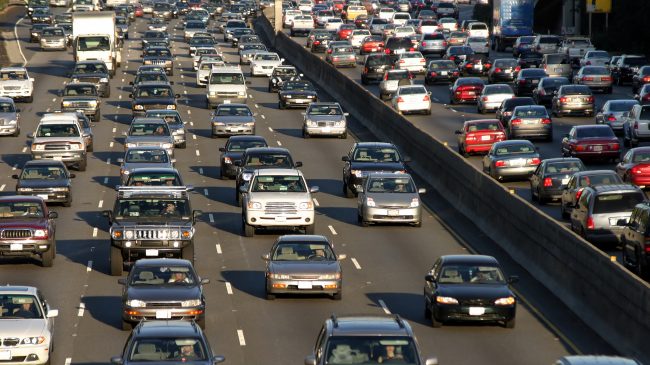In November, state voters will decide whether or not to repeal the 2017 state law increasing gasoline and diesel taxes. In Los Angeles, roads are in such bad shape that it costs the average driver $892 a year in additional vehicle wear and tear. Nationally, 25 percent of all U.S. highway bridges are either too narrow or structurally deficient, and chronic traffic congestion costs Americans $160 billion per year in wasted time and fuel.
Fuel taxes were sold to the public last century as “highway-user fees.” And originally, they were used solely to build and maintain highways. Yet that is far from the case today. Nearly one-fourth of all federal fuel taxes are used for non-highway purposes, and it’s worse than that in some states. In California, over the next 30 years, $18 billion of state gas-tax money is pledged for paying off bonds issued to build Gov. Jerry Brown’s high-speed-rail boondoggle.
It’s not hard to see that there is something fundamentally wrong with the way we fund and manage the highways we all depend on. Highways are one of our basic public utilities — along with water, electricity, natural gas, telephones, etc. Yet we don’t have huge political battles over how to pay for those utilities. Every month you get a bill from your electric company, water company, phone company, and satellite or cable company. You pay for the specific services you used, and the money goes directly to the company that provided those services.
Highways need to be financed and operated as utilities, rather than as politicized, state-owned enterprises. That means each highway needs an owner. Highway customers should pay their highway bills directly to that owner, based on how much they use the roads and how damaging their vehicle is to the pavement. The owner should assess the need for new links or more lanes, and finance the construction by issuing long-term revenue bonds. Of course, as with any other major construction projects, they should have to comply with existing planning and environmental regulations.
This might sound like a libertarian fantasy, but it’s a model with a long history that stretches into the present day. Private turnpikes were the main inter-city roadways in 18th and 19th century Britain — and 19th century America. After WWII devastated Europe, three countries — France, Italy, and Spain — developed their major highway networks as investor-owned toll roads. Highways there remain very similar to our electric-utility franchises today. Companies bid for a long-term franchise to build and operate a particular highway, subject to the terms and conditions of a long-term contract called a concession.
It has taken a couple of decades for this to catch on in the United States, with the first two projects — the 91 Express Lanes in Southern California and the Dulles Greenway in Virginia — opening in 1995. Since 2000, investor-funded toll projects worth $36 billion have been financed, primarily in Colorado, Florida, Texas, and Virginia. Highways are being upgraded with all-electronic toll systems and resurfacing, while some added lanes and better service plazas, among other things.
If done right, a shift from politicized highways to customer-friendly highway utilities could address the American system’s major shortcomings. Highway owner/operators have strong incentives to properly maintain their facilities so that customers willingly pay to use them. With per mile toll charging, they have reliable, bondable revenue streams that make it possible to finance large-scale reconstruction, widening, etc. when it’s needed, not someday in the future when the money is somehow cobbled together.
Continuing the status quo is untenable. The federal highway-funding system, which now depends on tens of billions in “general revenue” each year to supplement dwindling fuel-tax revenue, is not sustainable. State governments are poorly positioned to take up the slack since the majority of them have massive unfunded liabilities in their public-employee pension systems that will restrict their spending for decades to come. And the gas tax system is running out of steam, as conventional engines go twice as far on a gallon of gas and electric and other propulsion sources get set to become mainstream in coming decades.
The transformation of highways from state-owned enterprises to highway utility companies won’t happen overnight but it is possible — and sorely needed.
This column originally ran in The Orange County Register.

